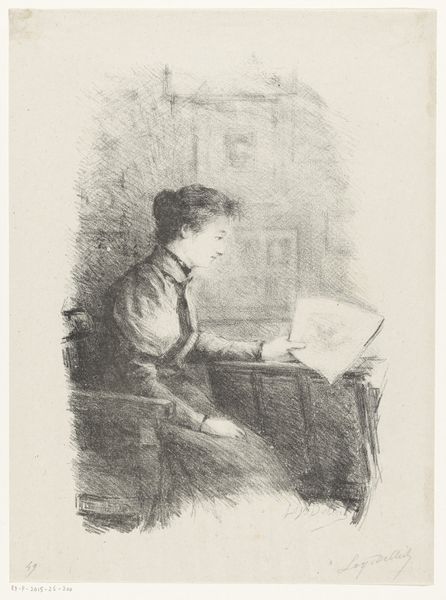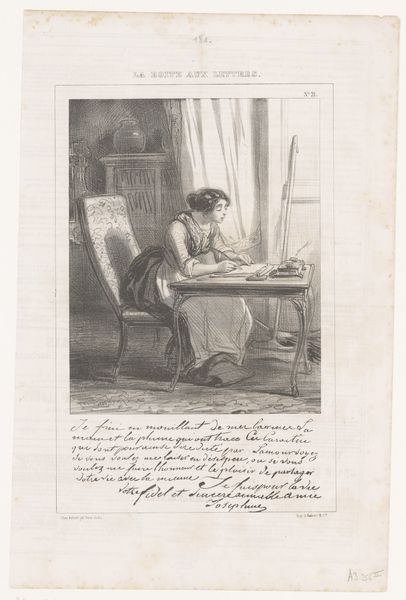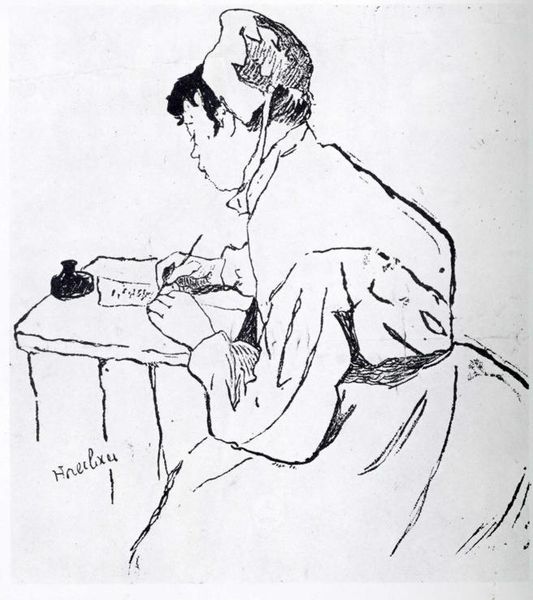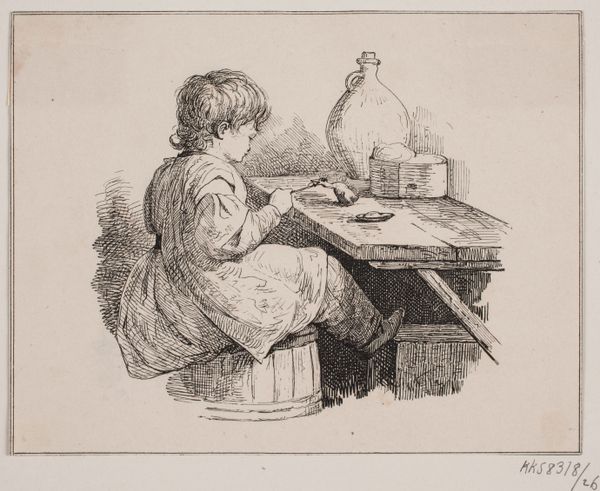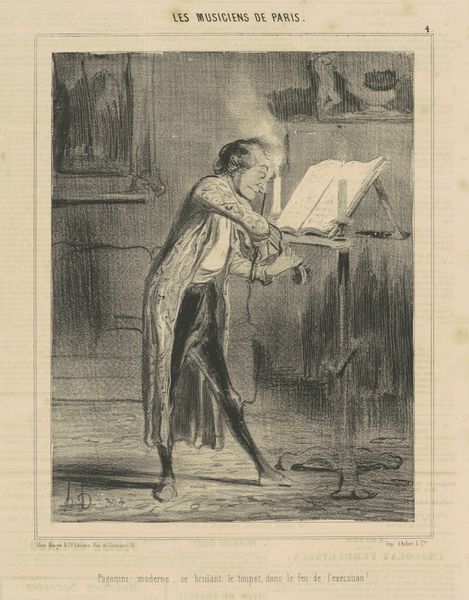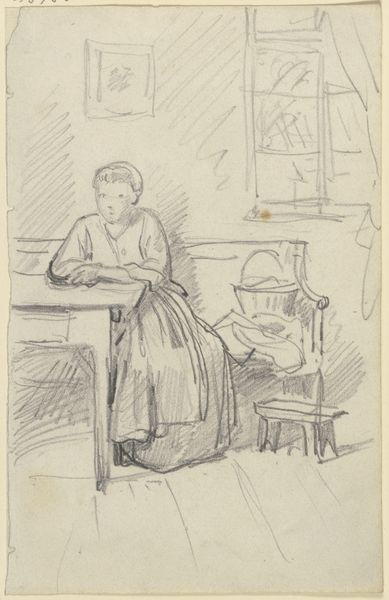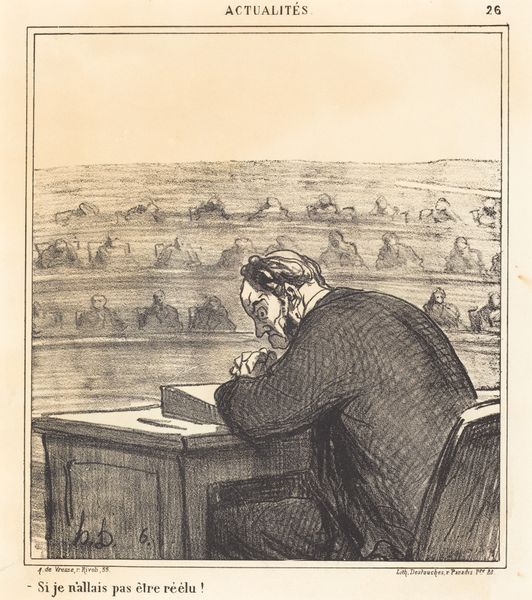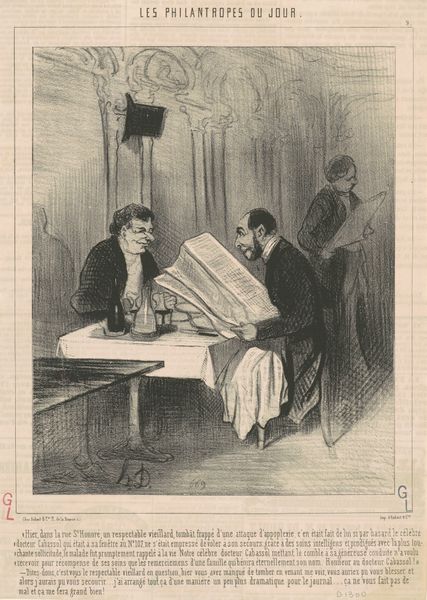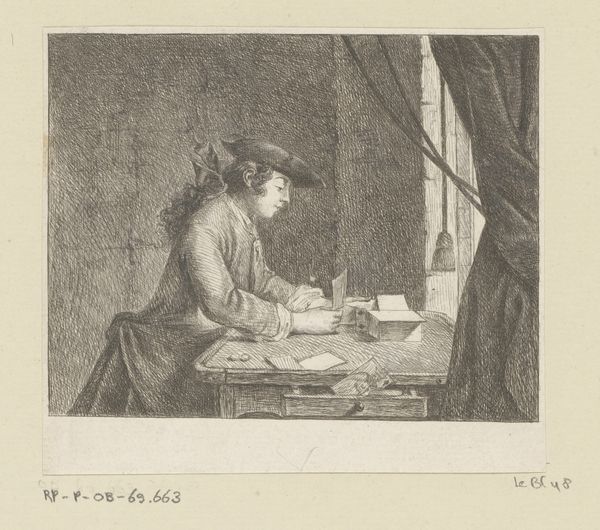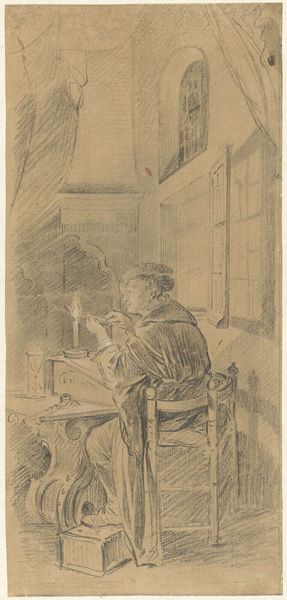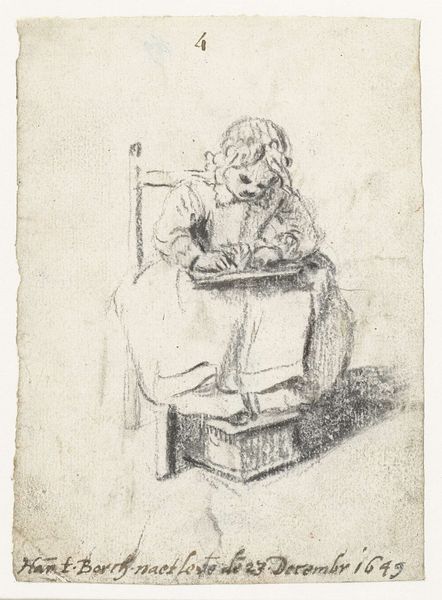
drawing, ink, pen
#
drawing
#
16_19th-century
#
narrative-art
#
mechanical pen drawing
#
pen illustration
#
pen sketch
#
pencil sketch
#
figuration
#
personal sketchbook
#
ink
#
ink drawing experimentation
#
pen-ink sketch
#
pen work
#
sketchbook drawing
#
pen
#
genre-painting
#
storyboard and sketchbook work
#
realism
Dimensions: height 170 mm, width 142 mm
Copyright: Rijks Museum: Open Domain
Curator: Here we have a pen and ink drawing from 1862 by Pieter van Loon, titled "Verhaal van de jongen Jantje, nr. 3," or "The Story of the Boy Jantje, No. 3," currently held at the Rijksmuseum. What strikes you most about this piece? Editor: Well, right off the bat, it's the mood. There's something so utterly… listless about him. Like a caged bird forced to perform sums. Look at his posture; the slumped shoulders, the downturned gaze, that little pile of discards on the floor like scattered hopes. It’s melancholic, to say the least. Curator: Indeed. Van Loon captures a weariness in this image of childhood. These genre scenes, which were becoming increasingly popular, often provided social commentary. Here, we see the rigidity of the educational system and perhaps a critique of rote learning. Notice how Jantje is dwarfed by the slate and the imposing calculations on display. Editor: That slate is almost comically large, isn’t it? A symbol, perhaps, of the insurmountable tasks set before him. And those numbers! So regimented, so… lifeless. They certainly don’t seem to be sparking any joy in young Jantje. It's also quite endearing in how sketchy and immediate the linework is. You get the feeling Van Loon dashed this off, perhaps a quick observation from his own life? Curator: That sense of immediacy contributes to its charm, doesn't it? Pen and ink allowed for quick notations. These genre paintings often appeared in satirical magazines. While we can’t confirm Van Loon's intent, his art undoubtedly echoes the rise of bourgeois culture and the evolving concepts of education and childhood. Editor: It certainly makes you wonder what Jantje’s “story” is beyond this moment. Was he daydreaming of skipping stones or climbing trees? Or perhaps dreaming of becoming a great artist himself, capturing the world with sketches of his own? You can almost feel his longing for escape bubbling up. Curator: It is interesting to reflect on these personal elements amid institutional structure. The piece invites us to look beyond Jantje’s particular experience towards questions about how children, across history, relate to learning and to imposed discipline. Editor: Absolutely. It's a quick sketch, but rich with humanity. Makes you want to reach out and tell Jantje, "Hey, there’s a whole world beyond those numbers. Hang in there.”
Comments
No comments
Be the first to comment and join the conversation on the ultimate creative platform.

